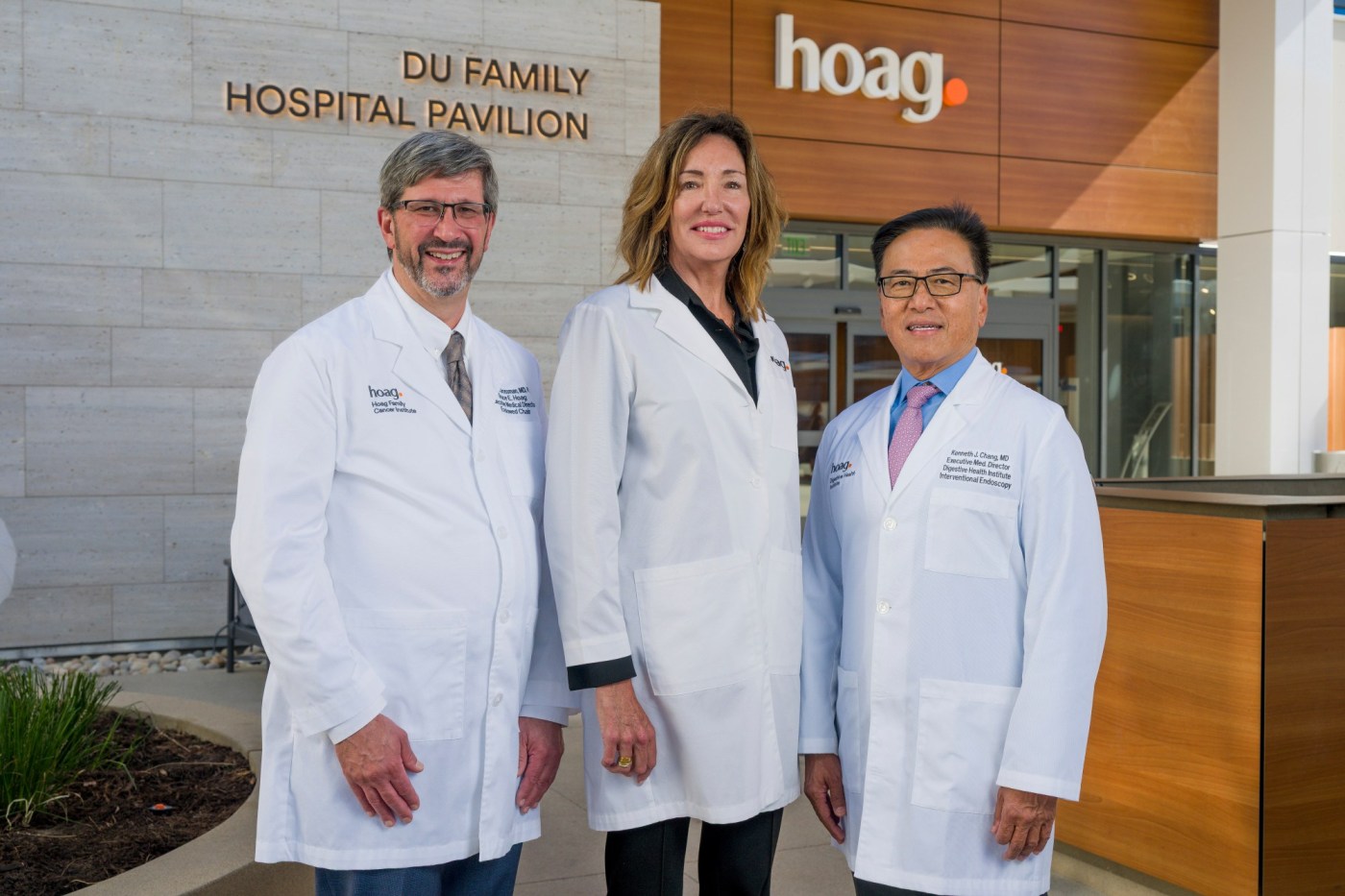Hoag leaders make a bold promise as they prepare to open the hospital’s $1 billion Sun Family Campus in Irvine next September: Come to Hoag and you won’t have to travel anywhere else for care.
Once it opens, Hoag’s expansion will feature six new buildings, including a dedicated women’s hospital, a surgical pavilion and a digestive health and cancer institute. The campus will include 155 inpatient beds, 11 operating rooms, 24 labor, delivery, recovery and postpartum suites, a 17-bed NICU, robotic-assisted surgery, a worship center, a wellness park — and the list goes on.
Hoag isn’t the only one growing in Irvine. This year and next, major health players — including City of Hope and UC Irvine — are set to add millions of square feet of new hospital and health education space. By decade’s end, Irvine could be one of the nation’s most health-focused communities.
So as construction work continues on Hoag’s Irvine campus, the doctors leading three specialities that will have homes there, women’s health, digestive health and cancer care, sat recently for a roundtable discussion on what the expansion will allow their health care teams to do and what will set Hoag apart.
For starters, Dr. Steven Grossman, the lead of the hospital’s cancer institute, said a new 24/7 cancer urgent care center will be there for cancer patients across Orange County.
“Show up if you have cancer and you have a problem that needs attention anytime of the day, certainly in the middle of the night, weekends and holidays,” he said. “Our facility is going to be open to everybody, so it doesn’t matter who’s treating you.”
Cancer patients often face sudden medical issues at odd hours, and Grossman said emergency rooms, including at Hoag, “are just not the most ideal environment for immunosuppressed cancer patients.”
“This is certainly a differentiator throughout the county,” Grossman said of the 24/7 cancer urgent care center.
He added that the expansion allows Hoag to provide more specialized care than most community hospitals. Rather than having oncologists treat multiple types of cancer, Hoag will have doctors focusing exclusively on a single cancer type, whether lung, stomach, breast or blood cancer — offering experts in just about every cancer.
Dr. Allyson Brooks, a Hoag physician since 1993, said the Irvine hospital’s model is designed so families can get multiple types of care without leaving the community. Patients can receive screenings, imaging, doctor consultations, surgery and access clinical trials — all on the same campus, she said.
Brooks, who leads Hoag’s women’s health institute, said she envisions the Sun Family Campus will “allow women to feel that we can take care of them all in one location, her and her children, her spouse or partner in life, her parents, so that the family doesn’t need to leave the community where they live, where they work, where they have connections and support.”
“I think that the most important thing is that people won’t need to leave home, they won’t need to leave Orange County. They’ll be able to come right here, and they’ll be able to get here from the 405 or the 5 or the 133 or they can fly in as a destination into John Wayne Airport,” she added. “So we see it as something for the entire family.”
Beyond treatment, Hoag plans to expand preventive care, the physicians emphasized.
Dr. Kenneth Chang joined Hoag this summer from UC Irvine with the ambitious goal to launch Orange County’s largest digestive health institute, turn the community hospital into a research leader and, ultimately, eliminate esophageal and colon cancer in Orange County.
And that begins with preventative care, focusing on symptoms he calls “pre-cancer” and “pre-pre-cancer,” such as obesity, diabetes and even heartburn.
“Looking at (cancer) from, say, a community point of view, obviously, a person walking in the door with various cancers, we’re going to strive to provide all the treatments, standard of care, clinical trials for a phase 1, 2, 3, 4 cancer. But we’re dreaming bigger than that. We’re dreaming about how do we actually decrease the cancer prevalence incidence in Orange County,” he said.
The idea is for Hoag’s new weight and metabolic center to offer the full spectrum of care in one place, from behavioral and mental health support to smart food choices and meal prep, as well as endoscopic and surgical procedures, so that when a patient walks in, they receive care “without having to worry about which center that person needs to tap into” next, Chang said.
Preventive care can also look simpler, he said.
Chang said Hoag’s marketing team created a free, 20-question assessment anyone can complete online or through an app. The tool will evaluate a person’s risk for developing cancer and other conditions, then provide guidance based on their risk level.
The tool will be able to offer personalized recommendations, from diet and exercise to medications, including what to eat, what not to eat and how to eat.
Chang said Hoag is also tailoring care to the ethnic composition of its surrounding community. He noted that liver and stomach cancers disproportionately affect the Asian population, unlike the top cancers for the U.S. population overall, which are lung, colon and pancreatic.
“Our leadership is poised to look at that and to provide that kind of care, education, awareness, and again, the same depth of care that you would see in top-level hospitals in Asia,” he said. “So our advanced liver program is hyper-focused on (Hepatocellular carcinoma) liver cancer and how to screen for it, how to detect it, how to treat it minimally invasively, all the way to surgery and so on.”
Grossman says that kind of focus has helped Hoag recruit top physicians from across the country.
“People just want to come here,” he said, “whether I’m talking to PhD researchers, physicians, physician scientists, advanced practice providers, there’s something magnetic about this place.”









